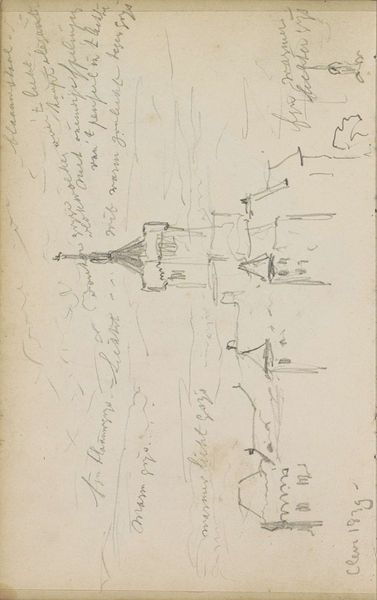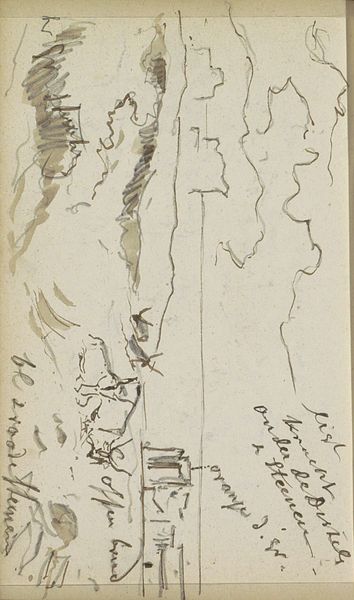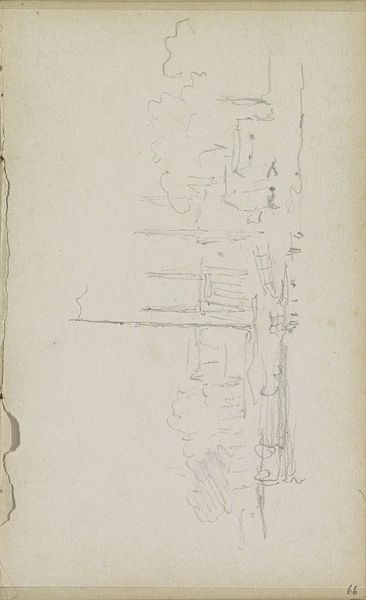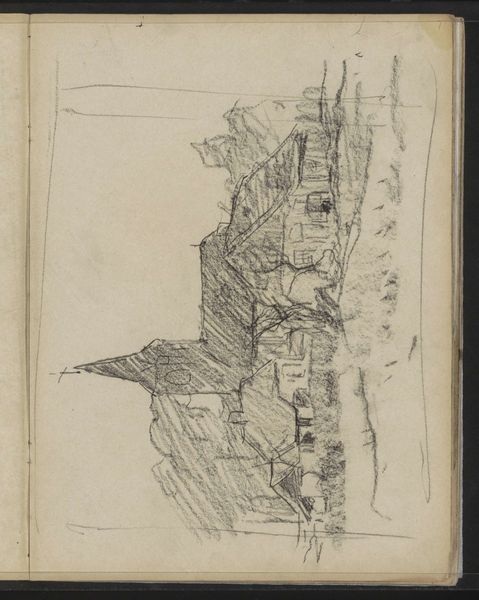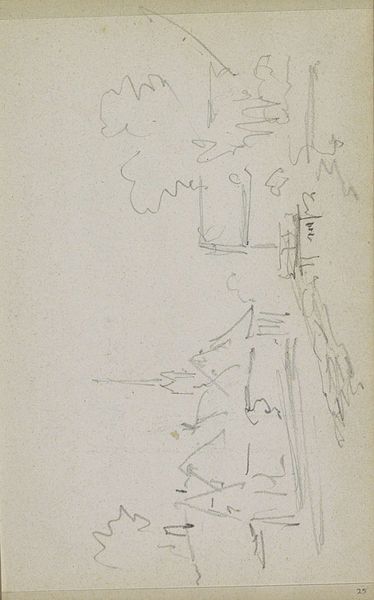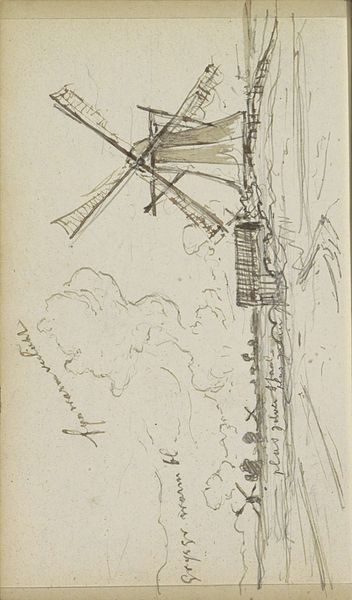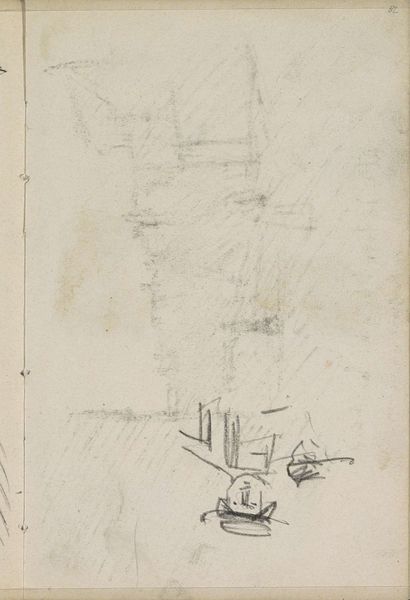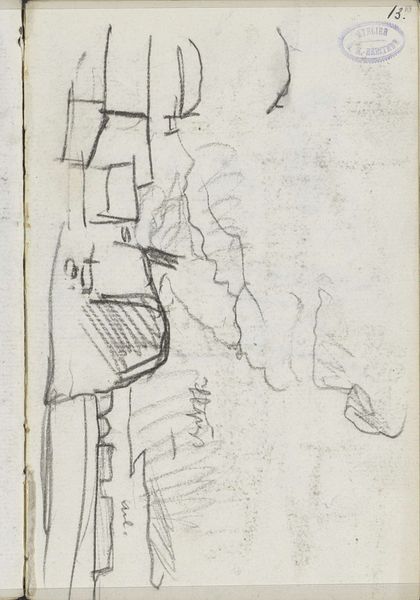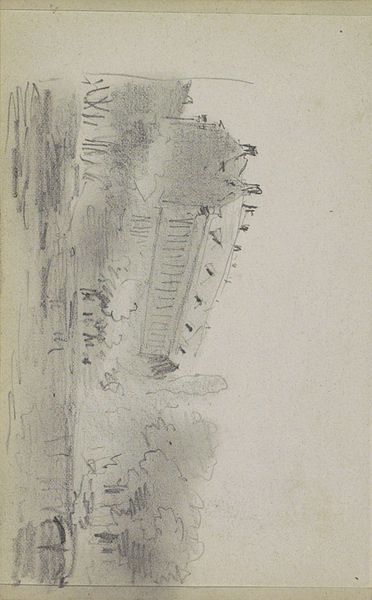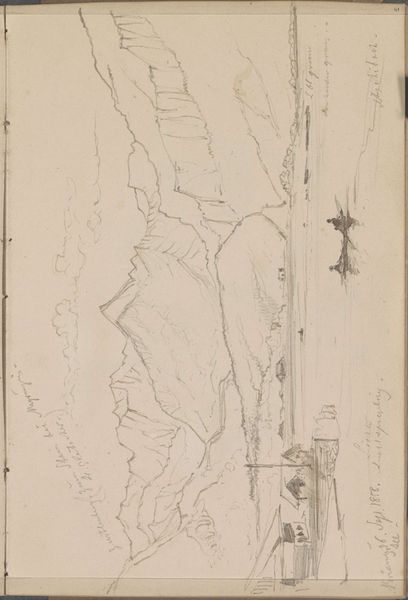
Copyright: Rijks Museum: Open Domain
Editor: Here we have Johannes Tavenraat’s "Landscape with a Windmill", a pencil drawing dating from around 1862-1864. There’s a tentative, sketch-like quality to the image that I find quite charming. What stands out to you? Curator: Well, first, note how the windmill isn't simply a structure; it’s an embodiment of Dutch identity and ingenuity, a persistent image in art, culture, and psychology. Its repeated appearances have imbued it with significance far beyond mere function. Think about the wheel, Editor. Editor: The wheel as a symbol? Curator: Precisely! Across cultures and time, the wheel signifies cyclical existence, time itself, and relentless progress. By depicting a *windmill*, Tavenraat evokes those deep, resonant ideas specific to 19th-century Dutch Romanticism, emphasizing human connection to the land, but even that feels rooted in deeper ideas. Is he referencing anything in particular, would you guess? Editor: It makes me think of "Don Quixote," tilting at windmills. So perhaps the futility of human effort, or even delusion? Curator: An excellent interpretation! The windmill’s turning sails may echo the futility of progress without true meaning or connection, something society always seems to ponder! Do you get that sense as well? Editor: I do see that now, thanks to your perspective. It’s a simple sketch, but incredibly rich in layers of cultural symbolism. Curator: Yes! Even within seeming simplicity, historical context provides more substance, and makes the piece far more powerful, showing cultural endurance.
Comments
No comments
Be the first to comment and join the conversation on the ultimate creative platform.
